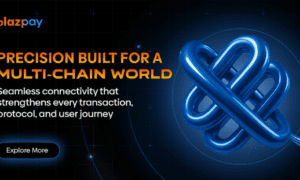A world that’s always changing, one business which has seen a significant impact through technology advances is the delivery and packaging of parcels. Artificial intelligence (AI) has changed the manner in which parcels are packed and tracked as well as how they are delivered offering more effective and smooth services for both consumers as well as businesses.
In a time when e-commerce is on the rise, the demand for efficient and reliable packaging of parcels and delivery is never higher. AI will transform this sector, taking on the challenges while creating opportunities to create new opportunities for.
The Current State of Parcel Packaging and Delivery
The traditional parcel packaging and delivery system rely heavily on manual work and well-established routes. Though these systems are reliable however, they can be unreliable and vulnerable to error. Consumer expectations for quicker and better delivery are increasing as the need to transformation becomes clear.
How AI is Transforming Parcel Packaging
AI-Powered Sorting and Routing
One of the biggest techniques AI can transform packaging for parcels is via the intelligent routing and sorting process. AI algorithms analyze data about the weight, size and dimensions of packages as well as destination and transport conditions to design the most efficient routes for delivery. It not only decreases time to delivery but also reduces the amount of fuel consumed, which benefits both the environment as well as logistic companies.
Enhanced Last-Mile Delivery
The delivery problem of the last mile and the task of delivering packages to doorsteps of customers This is an area where AI excels. Artificially-powered delivery robots and drones are in development to help manage urban environments and then deliver packages quickly and effectively. They have the capability to lower delivery prices as well as make same-day, and delivery times of one hour commonplace.
Improved Package Security
AI plays an important role in improving the security of packages. The surveillance system powered by AI can be able to monitor all delivery processes and detect any activity that is suspicious or the possibility of theft. This helps ensure the security of important packages and offers assurance for the business and consumer.
Reduced Environmental Impact
AI could help in lessening the environmental impact of delivery. Through optimizing routes for delivery by using autonomous and electric vehicles, as well as reducing packaging materials used for unnecessary purposes, AI helps decrease carbon emission and the waste that comes with logistics.
Challenges and Concerns
Although the potential of AI for parcel packaging and delivery has great possibilities, there are obstacles to conquer. Concerns about privacy related to surveillance and data gathering, and the possible displacement of human employees, should be considered carefully to guarantee an ethical AI use.
The Road Ahead for AI in Parcel Packaging and Delivery
Future prospects for AI for parcel delivery and packaging is promising. Continuous advances in robotics, machine learning as well as data analytics will help further improve and broaden the use of AI within the delivery industry. Customers can anticipate speedier, more reliable as well as environmentally-friendly delivery services.
Pros and Cons of AI Parcel Packaging and Delivery
Artificial Intelligence (AI) has significantly affected the parcel shipping and packaging industry changing the manner in which parcels are handled, organized and then delivered and Xfinity company also using the AI for return xfinity equipment. Although AI offers a variety of advantages the market, it also brings issues and disadvantages.
Pros
1. Efficiency and Speed
AI algorithms could improve the sorting and routing process resulting in quicker and better delivery. Sorting packages is by various criteria such as size, weight and location, which can cut delivery time substantially.
2. Enhanced Last-Mile Delivery
Artificial Intelligence-powered drones and delivery robots are adept at navigating urban areas and getting packages delivered to clients doorsteps in a short time. This technology could be used to transform the delivery system which will make the process more efficient and speedy.
3. Improved Accuracy
AI decreases the chance of error when the delivery and sorting process. By using advanced machine-learning algorithms, the risk of misdirecting or handling packages are reduced, which improves general accuracy as well as customer satisfaction.
4. Cost Reduction
With route optimization through route optimization, fuel savings, as well as decreased labor costs AI could lead to substantial costs reductions for logistic businesses. This could translate into lower prices for customers.
5. Environmental Benefits
AI could help in decreasing the environmental impacts of courier services through optimising routes, making use of electric or autonomous vehicles, as well as reducing the use of packaging materials that are not needed. It is in line with the sustainability objectives.
6. Enhanced Security
AI-powered surveillance systems track packages during the entire delivery procedure, and can detect possible theft or suspicious behavior. This is an added protection for your valuable parcels.
7. Data-Driven Insights
AI produces a vast amount of data which can be utilized to aid in analytics as well as decision-making. Business can gain invaluable insight into the behavior of customers as well as delivery patterns and management of inventory, which can lead to more effective strategy for business.
Cons
1. Privacy Concerns
AI-powered systems that track and record data throughout delivery can pose privacy issues. Some customers may be uncomfortable that every step they take is recorded and tracked.
2. Data Security
The possibility of storing and storing massive amounts of data makes AI systems susceptible to attacks on data and hackers. Security of sensitive customer data becomes an essential issue.
3. Job Displacement
Automating tasks with AI may result in unemployment for delivery staff as well as warehouse workers. Although AI provides new employment opportunities however, it could also alter the job market as it is.
4. Technical Challenges
The implementation of AI to improve the delivery of parcels and packaging is a major technical undertaking that requires a large infrastructure as well as expertise. The smaller companies in logistics may be unable to make the leap.
5. Initial Investment
The process of developing and integrating AI technology into current logistic processes could be costly. The companies must be able to put in substantial initial investment.
6. Dependence on Technology
Being heavily dependent on AI could expose companies to technical or system errors. It can cause chaos in the operations of a company if not handled properly.
7. Regulatory Hurdles
The application of AI for parcel delivery could be subject to regulatory issues in relation to privacy of data and safety requirements applicable to autonomous vehicles and rules for drones in the airspace.
Conclusion
Artificial Intelligence is expected to change the way parcels are packaged and delivery sector, offering enhanced efficiency, security as well as environmental sustainability. With technology continuing to improve and improve, we could see the future in which AI-driven systems efficiently manage the logistics involved with parcel delivery which will make our lives comfortable and environmentally sustainable.

































